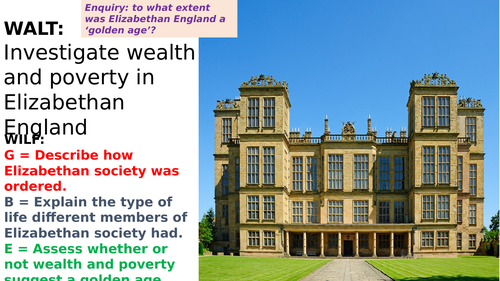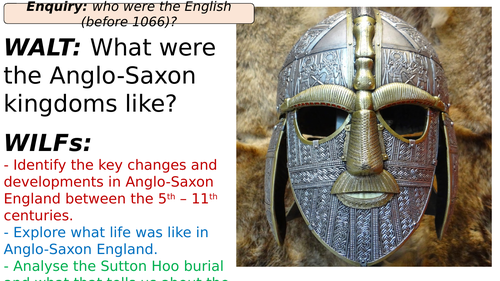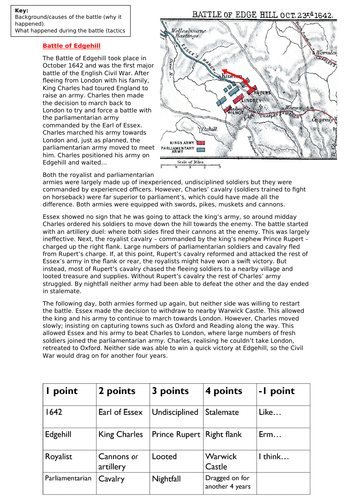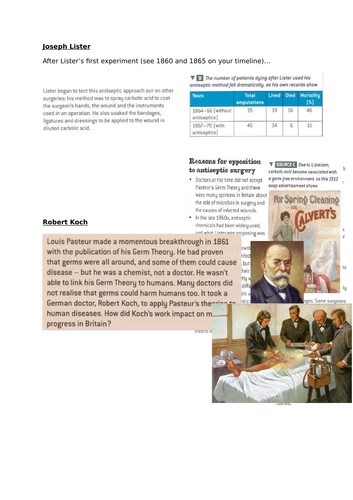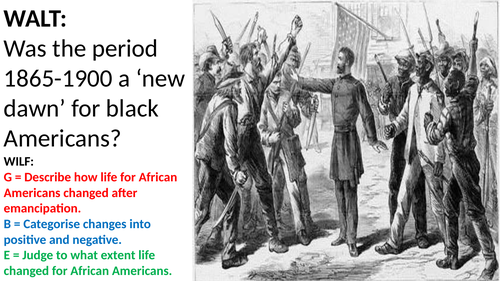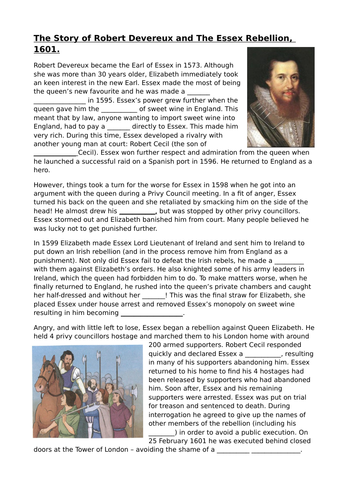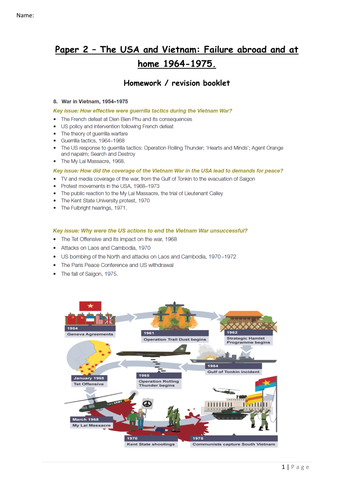
58Uploads
20k+Views
5k+Downloads
All resources

Wealth and Poverty in Elizabethan England
This is part of a series of lessons, aimed at Y8, based around the inquiry: to what extent was Elizabethan England a Golden Age? Each lesson comes back to and refers to the arguments of two history teachers: Mr Oldham and Mr Williams.
The series of lessons is as follows:
Inquiry introduction.
Elizabethan Religious Settlement.
Elizabeth and the issue of marriage.
Sailors and exploration during Elizabeth’s reign.
Wealth and poverty in Elizabethan England.
Culture and theatre in Elizabethan England.
Mary Queen of Scots.
Causes of the Anglo-Spanish conflict.
The Spanish Armada.

The Lost Colony at Roanoke (Tudor Exploration and Colonisation)
The mystery of the Lost Colony at Roanoke is explored in this lesson as part of a unit enquiry: ‘how did England become more connected with the wider world between 1492 -1642?’
Includes a video (from Smithsonian channel) introducing the mystery, followed by a task using five pieces of evidence for students to analyse to see what prevailing theories about the fate of the Roanoke Colony are most supported by the evidence. This is followed by an analysis of two interpretations from historians about the fate of the colony. Finally, a ‘counter the codswallop’ plenary.
Intended to be taught to KS3.

AQA GCSE German Navy Laws
Designed to cover part of the new AQA GCSE History ‘Germany, 1890-1945’ topic.

Migration to Tudor and Stuart England
Migration to Tudor and Stuart England is explored in this lesson as part of a unit enquiry: ‘how did England become more connected with the wider world between 1492 -1642?’
Includes a starter task based around the 1511 Westminster Scroll (John Blanke), followed by a mix and match task based on migration factors (why migration happens), followed by the main task: a ‘living graph’ to show the different experiences of each migrant group. The migrant groups covered are: Portuguese Conversos, European ‘alien’ migrants, Romani Gypsies, French Huguenots, Africans (‘blackamoors’) and Native Americans.
Intended to be taught to KS3.

Roman Skeleton Mystery
This is the first two lessons (2 hours) of the enquiry: ‘Who were the English (before 1066)’?
The enquiry focuses on the skill historical evidence. Overall, students will refer to five pieces of evidence (Roman skeletons discovered at Aballava fort, Sutton Hoo helmet, Bede’s account of Hadrian and Theodore, the Viking Domesday Stone, and a coin from the reign of King Æthelstan) in order to answer the enquiry question.
It revolves around the students investigating the mystery of two skeletons by drip-feeding them numerous pieces of evidence. The resources on the PowerPoint are hopefully self-explanatory in terms of how to deliver it to students.
The lesson sequence for this enquiry is as follows:
Roman Skeleton Mystery (2 lessons).
Anglo-Saxon Kingdoms and Sutton Hoo (2 lessons).
The Spread of Christianity in England.
Viking Raid on Lindisfarne.
Æthelstan, King of the English
Review lesson: Who were the English (before 1066)?

Anglo-Saxon Kingdoms and Sutton Hoo
This lessons (2 hours) is part of the enquiry: ‘Who were the English (before 1066)’?
The enquiry focuses on the skill historical evidence. Overall, students will refer to five pieces of evidence (Roman skeletons discovered at Aballava fort, Sutton Hoo helmet, Bede’s account of Hadrian and Theodore, the Viking Domesday Stone, and a coin from the reign of King Æthelstan) in order to answer the enquiry question.
This lesson involves a series of maps to investigate the makeup of the British Isles in the post-Roman world. It then investigates objects from the Sutton Hoo burial. The lesson contains all necessary resources including starters and plenaries. One optional additional task requires the SHP Y7 textbook, but this task is strictly optional. The resources on the PowerPoint are hopefully self-explanatory in terms of how to deliver it to students.
You can download the corresponding student booklet for free with all the required work sheets and resources.
The lesson sequence for this enquiry is as follows:
Roman Skeleton Mystery (2 lessons).
Anglo-Saxon Kingdoms and Sutton Hoo (2 lessons).
The Spread of Christianity in England.
Viking Raid on Lindisfarne.
Æthelstan, King of the English
Review lesson: Who were the English (before 1066)?

English Civil War Edgehill and Naseby
A self-contained lessons intended to draw comparisons between the Battles of Edgehill and Naseby. Intended for use with Y8.

Liberal Social Reforms - Health and the People - GCSE History
Part of the Health and the People topic

Eleanor of Aquitaine
A fully resourced lesson about Eleanor of Aquitaine intended for KS3 (Year 7). The resources include:
A starter ‘do now’ task about gender in the Middle Ages (based on prior knowledge).
An introduction to Eleanor and a knowledge check task.
A timeline task (information about her first marriage on the PowerPoint). Students use the remaining information (based on her second marriage) to complete the timeline.
Consolidation tasks based on the Writing Revolution’s ‘because, but, so…’.
Follow-up tasks based on choosing and explaining Eleanor’s characteristics.
Challenge task also included.

Empress Matilda, Lady of the English
A lesson intended for KS3 (Y7). Is a fully self-contained lesson. Resources include:
A thought-provoking starter task.
General sources on medieval women.
A cropped video introduction to Matilda embedded into the PowerPoint (from the show ‘England’s Early Queens’.
A guided reading task on the story of Matilda and how gender affected her power in the medieval world.

Essex's Rebellion, 1601. Elizabethan England - AQA History GCSE
Designed to fit Elizabethan England topic (GCSE)

Vietnam War comprehensive work book (GCSE)
This 35-page long work book covers the Vietnam War starting from why the USA got involved up to the fall of Saigon in 1975.
It features clear and detailed information on all aspects of the war (from combat tactics, to the media coverage and protest movements in the USA).
Most pages feature comprehension style questions with numerous GCSE questions at the back (these are designed for the AQA modern world spec but can easily be adapted).
This booklet has found use as a homework booklet to go alongside a series of lessons and has been used as a comprehensive revision tool.

English Parliament - Henry III, Edward I and Simon de Montfort
2 lessons assessing why the English parliament developed and comparing Parliament under the Earl of Leicester to today’s parliament.
Bundle

Was Elizabethan England a Golden Age?
This is a series of lessons, aimed at Y8, based around the inquiry: to what extent was Elizabethan England a Golden Age? Each lesson comes back to and refers to the arguments of two history teachers: Mr Oldham and Mr Williams.
The series of lessons is as follows:
Inquiry introduction.
Elizabethan Religious Settlement.
Elizabeth and the issue of marriage.
Sailors and exploration during Elizabeth’s reign.
Wealth and poverty in Elizabethan England.
Culture and theatre in Elizabethan England.
Mary Queen of Scots.
Causes of the Anglo-Spanish conflict.
The Spanish Armada.
Bundle

'Who were the English?'
This bundle features all the lessons and resources needed to teach the enquiry: ‘Who were the English (before 1066)’?
The enquiry focuses on the skill historical evidence. Overall, students will refer to five pieces of evidence (Roman skeletons discovered at Aballava fort, Sutton Hoo helmet, Bede’s account of Hadrian and Theodore, the Viking Domesday Stone, and a coin from the reign of King Æthelstan) in order to answer the enquiry question.
The resources on the PowerPoints are hopefully self-explanatory in terms of how to deliver it to students. But there are brief instructions in the descriptions for each lesson.
You can download the corresponding student booklet for free with all the required work sheets and resources.
The lesson sequence for this enquiry is as follows:
Roman Skeleton Mystery (2 lessons).
Anglo-Saxon Kingdoms and Sutton Hoo (2 lessons).
The Spread of Christianity in England.
Viking Raid on Lindisfarne.
Æthelstan, King of the English
Review lesson: Who were the English (before 1066)?

